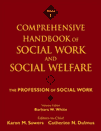Explanatory Legitimacy: A Model for Disability Policy Development and Analysis
Abstract
In this chapter we discuss and analyze contemporary disability policy in the United States through a policy analytic lens based on Explanatory Legitimacy Theory. This progressive theoretical framework distinguishes among descriptive, explanatory, and axiological or the legitimacy dimensions of human classification and responses to category members. Applied to policy, the framework of explanatory legitimacy allows for a careful analysis of the complex value and contextual foundations of policy responses not only to population categories but also to the factors that define subpopulations, determine their comparative worth, and shape distributive and other resource responses to legitimate category members. We begin with a brief historical overview of disability definitions and public responses from which two current and hotly debated models of disability critical to an understanding of disability policy emerged—internal and external. Internal definitions situate the causes of the atypical as embodied within humans and explain disability as an anomalous medical condition of long-term or permanent duration. This view locates definitional, axiological, gate keeping, and conceptual power within medical and professional communities, shaping policy that specifies public funding sources, and guides the distribution of and reimbursement for safety net benefits, special services, and resources for legitimate disability category members. The external view defines disability as a set of limitations imposed from the environment on a full range of individuals with diverse atypical characteristics. External environment factors include social, economic, cultural, and other influences. Policies that flow from this perspective, at least rhetorically, focus on equality of opportunity through environmental change. Based on an analysis and comparison of two policies—Social Security Disability Insurance, which represents an internal perspective and the Americans with Disabilities Act, which exemplifies an external perspective—we advance conclusions illustrating the nonlinear nature of disability policy and revealing that policy initiatives, even if ostensibly aimed at equality of opportunity through environmental change, are anchored on internal notions of disability and create a hierarchy of worth based on the value judgment about the legitimacy of the medical diagnosis for a policy response. The chapter ends with a call to rethink disability policy and other population categorical policies on a time continuum as well as on a foundation of celebration for diversity of ideas and bodies. With this charge accomplished, policy can move beyond rhetoric that obfuscates its value stance and tacit benefits at the expense of disabled individuals and groups who are explicitly named as the policy beneficiaries. Through a legitimacy analysis, we call for policy that creates universal rights, resources, and privileges on the basis of human description and need rather than on implicit, nomothetic, and essentialist assumptions about individual embodied worth.



